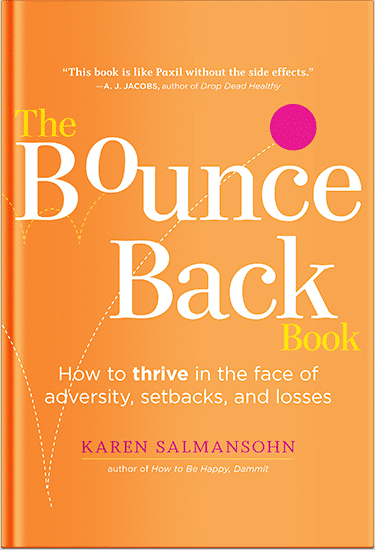 Starting therapy for your child often comes with mixed emotions, relief that help is on the way, but also nerves about what lies ahead. There’s paperwork, new terms to learn, and the uncertainty of how your child will respond.
Starting therapy for your child often comes with mixed emotions, relief that help is on the way, but also nerves about what lies ahead. There’s paperwork, new terms to learn, and the uncertainty of how your child will respond.
That’s where Applied Behavior Analysis (ABA) therapy comes in. It’s one of the most research-backed approaches for children with autism, built around the idea of teaching one small skill at a time so progress feels steady and achievable.
And ABA starts with something surprisingly simple yet life-changing: teaching kids how to ask for what they need. Whether it’s a favorite toy, a snack, or a break from an activity, being able to make a request, with words, gestures, or communication tools, can turn stressful moments into smoother ones.
This is why most ABA programs begin here before moving on to more advanced skills like following multi-step instructions or answering questions. Mastering this first step lays the groundwork for everything else, which is exactly what we’re exploring in this article.
How Do ABA Programs Teach Kids to Ask for What They Need?
One of the first skills targeted in ABA therapy is called manding, the process of teaching kids to request what they want. If you’ve been wondering what is manding in ABA, think of it as giving children the tools to communicate their needs in a way that works. This simple step can dramatically reduce daily frustration, build confidence, and encourage independence.
ABA therapists use evidence-based techniques to make this process smooth and motivating for the child. Sessions often include:
- Prompting and fading: Therapists start by modeling the request, then gradually reduce prompts so the child learns to do it independently.
- Reinforcement: Every successful request is rewarded immediately, whether that’s with a toy, a snack, or a favorite activity.
- Generalization: Kids practice requesting across different settings, people, and situations, so the skill becomes second nature.
Once this foundation is solid, children are better prepared to move on to labeling objects, following directions, and eventually having simple back-and-forth conversations.
Which Kids Benefit Most from Mand Training?
Some children begin ABA with no verbal language, while others speak but don’t know how to use words functionally. Those who benefit most from mand training are often kids who:
- Show frustration when they can’t get their needs met quickly.
- Use behavior (crying, grabbing, pulling) instead of words to communicate.
- They are highly motivated by specific toys, foods, or routines that can be used as learning opportunities.
Experts at Cultivate Behavioral Health & Education note that starting with functional communication keeps therapy positive and rewarding. When a child learns that communication leads to immediate results, they are more engaged in therapy and more willing to practice new skills.
Why Mands Are the Foundation for Future Learning
Manding is not just about the present; it sets children up for future growth. Once kids consistently request what they want, they are ready to explore more advanced language goals.
Here’s why this first step is so crucial:
- Improves attention span by keeping kids engaged through meaningful rewards.
- Builds cooperation skills because children start to see communication as a two-way exchange.
- Lays groundwork for social interactions, kids begin to interact with peers more naturally when they realize their words (or gestures) have power.
This progression often leads to more meaningful breakthroughs, such as labeling objects (“That’s a ball”), answering simple questions, or even sharing things with siblings and classmates.
Practical Ways Parents Can Support Manding at Home
Therapists introduce mands in structured sessions, but children learn fastest when parents reinforce them outside therapy. Try:
- Modeling language: Use short, clear phrases like “I want water” so your child hears how requests sound.
- Creating motivation moments: Keep favorite snacks or toys slightly out of reach to encourage communication.
- Prompting and praising: Gently guide your child to use words, gestures, or picture cards, and reward every attempt quickly.
- Keeping consistency: Make sure all caregivers use the same phrases and prompts, so kids don’t get confused.
These steps help children generalize communication skills, so they work at school, in public, and at home.
What Comes After Manding?
Once a child masters requesting, ABA therapy typically moves to other key skills:
- Tacting: Naming objects, actions, or people in their environment.
- Echoics: Practicing and repeating sounds to expand speech.
- Intraverbals: Learning how to answer questions and hold short conversations.
By building skills in this order, therapists ensure each new ability builds on the last, preventing overwhelm and setting children up for steady progress.
Wrap-Up
The first step of ABA therapy, teaching kids to ask for what they need, is one of the most powerful. It turns frustration into communication, strengthens parent-child relationships, and creates a foundation for future skills like social interaction and conversation.
With patient practice, guidance from trained professionals, and consistency at home, kids quickly discover that their voice (or their gestures) matter. That discovery is what keeps them motivated, engaged, and ready for all the milestones ahead.
P.S. Before you zip off to your next Internet pit stop, check out these 2 game changers below - that could dramatically upscale your life.
1. Check Out My Book On Enjoying A Well-Lived Life: It’s called "Your To Die For Life: How to Maximize Joy and Minimize Regret Before Your Time Runs Out." Think of it as your life’s manual to cranking up the volume on joy, meaning, and connection. Learn more here.
2. Life Review Therapy - What if you could get a clear picture of where you are versus where you want to be, and find out exactly why you’re not there yet? That’s what Life Review Therapy is all about.. If you’re serious about transforming your life, let’s talk. Learn more HERE.
Think happier. Think calmer.
Think about subscribing for free weekly tools here.
No SPAM, ever! Read the Privacy Policy for more information.
One last step!
Please go to your inbox and click the confirmation link we just emailed you so you can start to get your free weekly NotSalmon Happiness Tools! Plus, you’ll immediately receive a chunklette of Karen’s bestselling Bounce Back Book!


 Starting therapy for your child often comes with mixed emotions,
Starting therapy for your child often comes with mixed emotions,